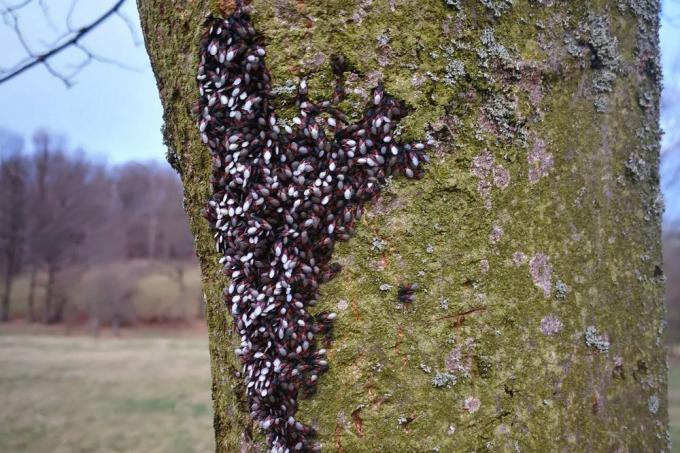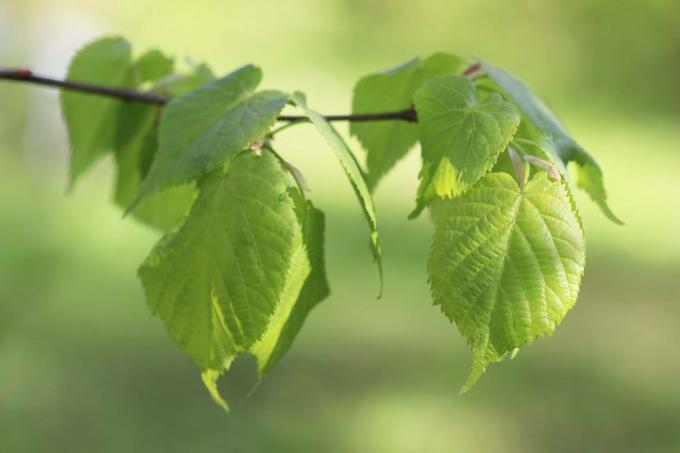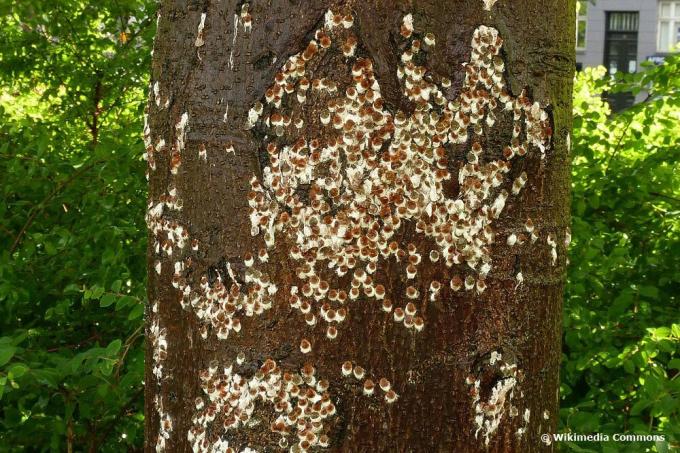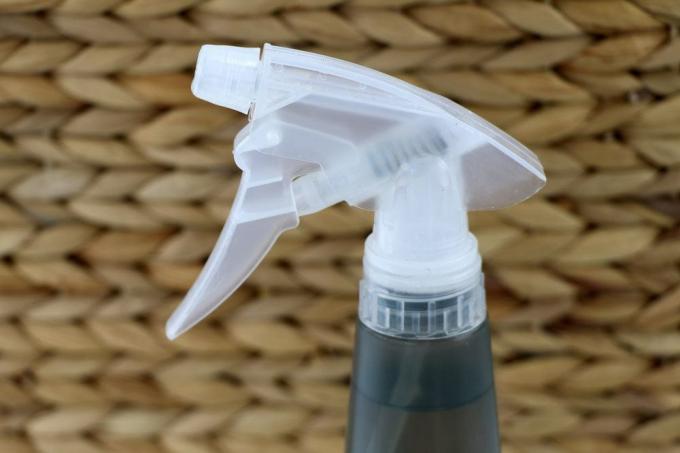
table of contents
- Recognize
- Need to combat
- vacuum cleaner
- Soapy water
- Collecting
- Transplant against new infestation
If a group of small, beetle-like creatures quickly form on the mallow family, it is likely to be linden bugs (Oxycarenus lavaterae). Find out what you can do about it.
Recognize
In order to know whether they are linden bugs, or mallow bugs, as they are also called, that collect in groups on trees and / or bushes, they should be identified beforehand. This is done by comparing typical optical properties and providing information on where and when they attack plants.
Optical details:
- Color: dark-reddish, black-red
- Risk of confusion: with fire bugs, which are often present at the same time
- Size: four to six centimeters
- Silver shimmering wings
- Larvae: red-brown abdominal area - head and chest black
- Collect in colonies that grow rapidly in size
- Often "sticking" to the bark in the mating position
- Like to lay eggs in cracks in the bark

Season for infestation:
- Especially in spring at higher temperatures after their hibernation when they are looking for food
- For egg-laying from spring to late summer
- In autumn mostly large masses of linden bugs because they like to overwinter in cracks in the bark
- Many die in winter, others survive hibernation, which lasts into early spring
Incident:
- Mainly only on mallow (Malvaceae) and linden (Tiliaceae) plants such as poplars, marshmallow and hibiscus
- Mostly on new plantings
- Often also on older linden trees
- Especially on winter linden trees (Tilia cordata)
- During the vegetation phase, often in the treetops
- From autumn increasingly visible on tree trunks and thick branches
- Can be on house walls - usually only looking for winter quarters in winter
- Occasionally "get lost" in buildings / living areas

Damage:
- Occasional leaf discoloration due to statements from the sap
- Unwooded shoots are slightly yellow in color when they suckle
- If there is extensive colony formation on branches, these can break off
Need to combat
Linden bugs do not have to be controlled as they do not pose a life-threatening threat to plants. They do not cause any noteworthy damage, as they mainly feed on the seeds of the mallow and linden plants and extract the juice from them. Likewise, people have nothing to fear.
Nevertheless, they are not welcome guests in the garden, so that many hobby gardeners want control. However, this makes sense in any case, because if other pests join in, a Significantly more extensive damage occurs and the plants are endangered by less resistance be. Accordingly, caution must be exercised here, especially if it is infested with the woolly bowl insect (Pulvinaria regalis).

Combat
Although linden bugs are to be considered harmless, the following are some control measures if they are undesirable:
vacuum cleaner
A vacuum cleaner is a great choice to get rid of Oxycarenus lavaterae. It only becomes difficult when they are located high up, where a classic cylinder vacuum cleaner cannot reach. A so-called back vacuum cleaner is the solution here, with which a ladder can also be used to get to the top of the crown. It is important that the suction tube is pushed over the bark from the bottom up to get one to achieve a scraping effect so that the pests loosen and directly through the suction air to be withdrawn. The suction bag must then be tightly closed and safely disposed of with household waste.
Soapy water
Soapy water has proven itself to be a very effective control agent against various pests for many years. It also works against the linden bugs, which ferment when they come into contact with the soapy water. Preparation and use work as described below:

- Use biodegradable detergent, curd soap or soft soap without additives
- Add about 100 grams / milliliter of soap / washing-up liquid per liter of water
- Let the soap dissolve - mix the detergent well
- Pour soapy water into the spray container
- Spray directly on the pests (dripping wet)
- In any case, also spray the trunk and soil around the tree (regardless of the presence of the mallow bugs)
- Repeat three times with an interval of two days
- If not all of them have died, restart the process one week after the last application
Tip: If you spray susceptible trees / plants generously with soapy water every spring and autumn, you can prevent linden bug infestation. The soapy water does not harm plants in any case - on the contrary, because you can also fight other pests, such as aphids.
Collecting
When collecting, the "favorable moment" of hibernation should be used. Then linden bugs are almost unable to move and can easily be picked up or swept out of the cracks in the bark. Here's the easiest way to do it:

- Lay out foil or similar around the tree / plant the size of the plant's circumference (to catch the pests)
- Sweep away all infested areas with a harder broom
- If necessary, use a small hand brush to loosen / sweep out pests in the cracks in the bark
- Sweep up fallen bugs and dispose of them in newspaper or other disposable material
- Make sure that the "disposal packaging" is tight so that "woken up" specimens do not flee
- Alternative to garbage disposal: leave linden bugs far away from the garden
Tip: Because mallow bugs are harmless to plants and humans, the use of chemical pesticides is in in no way justified and should therefore not be used to protect the environment or one's own health save. The home remedies mentioned offer an equally effective solution.
Transplant against new infestation
If you want to be on the safe side that no new infestation calls for additional work in the next year, you can use one of the The actions mentioned above were then carried out to transplant the affected plant / tree to another location, provided that possible. This prevents any mallow bugs that may still be present in the ground from multiplying and rising again. However, since the parasites collect seeds, there is a chance that a new mallow plant will develop on the spot. If this is removed immediately upon sighting, the linden bugs will look for a new habitat and move away.



